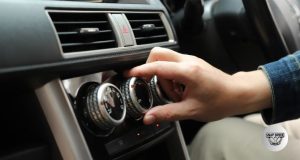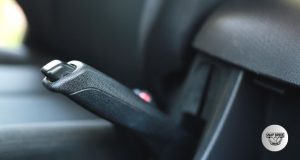Last Updated on October 16, 2025 by Aaron Blake
Have you ever felt your car’s engine rev higher, but the speed doesn’t match? That frustrating sensation is often caused by transmission slipping.
If your vehicle hesitates, jerks, or struggles to shift gears smoothly, you’re not alone—and understanding why this happens is the first step to fixing it. You’ll discover the most common reasons behind transmission slipping and how to spot the signs before small problems turn into costly repairs.
Keep reading to protect your ride and keep your drives smooth and safe.

Credit: urbsgarage.com
Contents
Worn Clutch Plates
Transmission slipping is a common problem in vehicles. One main cause is worn clutch plates.
Clutch plates help transfer power from the engine to the wheels. When they wear out, slipping happens.
What Are Clutch Plates?
Clutch plates are flat discs inside the transmission. They connect and disconnect the engine power.
These plates work by pressing against each other. This lets the car change gears smoothly.
How Do Clutch Plates Wear Out?
Friction causes clutch plates to wear over time. Constant use slowly thins the plates.
Heat from friction also damages the plates. Driving in heavy traffic makes wear faster.
Signs Of Worn Clutch Plates
Worn clutch plates cause the transmission to slip. The car may lose power when accelerating.
- Engine revs rise but speed stays the same
- Difficulty shifting gears smoothly
- Burning smell from the transmission area
Preventing Clutch Plate Wear
Drive gently to reduce clutch wear. Avoid riding the clutch pedal and sudden starts.
Regular maintenance helps spot wear early. Replace clutch plates before they cause damage.

Credit: urbsgarage.com
Low Transmission Fluid
Transmission fluid is essential for your car’s transmission system. It helps parts move smoothly and cools the system.
Low transmission fluid can cause the transmission to slip. This means your car may not shift gears correctly.
Causes Of Low Transmission Fluid
Transmission fluid can drop due to leaks or lack of maintenance. Leaks often happen in seals or gaskets.
- Damaged seals or gaskets
- Loose or broken transmission pan bolts
- Worn out transmission cooler lines
- Not checking fluid regularly
Signs Of Low Transmission Fluid
Low fluid causes several symptoms. These signs help you spot slipping early and avoid damage.
- Gear slipping or delayed shifting
- Strange noises like whining or clunking
- Overheating transmission
- Burning smell from the transmission
How Low Fluid Causes Transmission Slipping
Transmission fluid creates pressure for gear changes. Low fluid reduces this pressure, causing slipping.
Without enough fluid, parts do not get enough lubrication. This leads to overheating and worn parts.
Preventing Low Transmission Fluid Issues
Check transmission fluid regularly. Top it up or change it as the car manual says.
- Inspect for leaks often
- Use the right type of transmission fluid
- Follow the service schedule for fluid changes
- Fix leaks quickly to avoid fluid loss
Faulty Torque Converter
The torque converter helps the engine power reach the transmission. It allows smooth gear shifts and prevents stalling. A faulty torque converter can cause transmission slipping.
When the torque converter fails, the transmission may not engage properly. This leads to poor vehicle performance and possible damage.
The torque converter has clutch plates that connect the engine to the transmission. If these plates wear out, slipping happens.
Worn clutch plates reduce the transfer of power. This causes the engine to rev without moving the car well.
Damaged Seals
Seals inside the torque converter keep transmission fluid inside. Damaged seals cause fluid leaks and low pressure.
Low fluid pressure means the torque converter cannot work correctly. This results in slipping and overheating.
Contaminated Transmission Fluid
Dirty or old transmission fluid affects the torque converter’s function. Contaminants reduce lubrication and cause clutch slipping.
Regular fluid changes help avoid this problem. Contaminated fluid leads to poor gear engagement and slipping.
Broken Torque Converter Clutch (tcc)
The torque converter clutch locks the converter at higher speeds. A broken TCC causes slipping and poor fuel economy.
A faulty TCC makes the vehicle feel jerky and causes overheating in the transmission system.

Credit: www.carhub.ca
Damaged Bands Or Solenoids
Transmission slipping happens when your car changes gears poorly. Two common causes are damaged bands and faulty solenoids.
Both parts help the transmission work smoothly. When they fail, slipping can occur often.
Damaged Bands
Bands hold parts of the transmission in place. They wrap around gears to stop them from moving.
If bands wear out or break, gears slip. This causes the transmission to lose power or shift late.
- Wear over time causes bands to weaken
- Overheating can damage the bands
- Broken bands lead to poor gear engagement
Faulty Solenoids
Solenoids control the flow of transmission fluid. This fluid moves gears and bands inside the transmission.
If a solenoid is damaged, fluid flow stops or slows. This causes slipping or harsh gear changes.
- Electrical problems can cause solenoids to fail
- Clogged solenoids block fluid flow
- Faulty solenoids affect transmission pressure
Frequently Asked Questions
What Causes A Car Transmission To Slip?
Transmission slipping often happens due to low fluid, worn clutch, or damaged gears inside the transmission.
How Does Low Transmission Fluid Affect Slipping?
Low fluid causes poor lubrication, making gears slip and shift roughly or delay gear engagement.
Can Worn Clutch Cause Transmission Slipping?
Yes, a worn clutch can fail to engage properly, causing the transmission to slip during shifts.
Is Transmission Slipping A Sign Of Serious Damage?
Yes, slipping often signals internal wear or damage needing prompt repair to avoid costly fixes.
How To Prevent Transmission Slipping In Vehicles?
Regular fluid checks, timely servicing, and avoiding harsh driving help prevent transmission slipping and damage.
Conclusion
Transmission slipping can cause serious car problems. Knowing the common causes helps you act fast. Worn-out clutch plates, low fluid, and damaged bands often lead to slipping. Regular maintenance keeps your transmission healthy and smooth. Catching issues early saves money and stress later.
Keep an eye on your car’s performance. Don’t ignore strange noises or delays in shifting. Taking care of your transmission means safer, smoother drives ahead.





